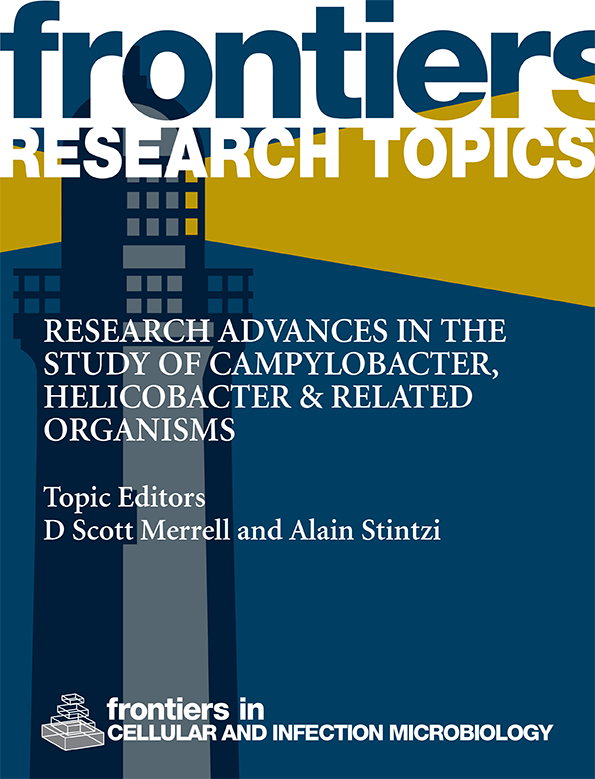两种人类乳头瘤病毒疫苗对宫颈上皮内瘤变 3 级和原位腺癌疗效的正面比较--基于人群的两项分组随机试验的后续研究
IF 4.6
2区 医学
Q2 IMMUNOLOGY
Frontiers in Cellular and Infection Microbiology
Pub Date : 2024-09-09
DOI:10.3389/fcimb.2024.1437704
引用次数: 0
摘要
导言:我们报告了二价和四价 HPV 疫苗对宫颈癌直接前兆疗效的正面比较,这些比较来自于对 III 期试验队列和未接种疫苗的妇女队列进行的为期 15 年的全国癌症登记随访。试验队列包括最初接种 HPV6/11/16/18 疫苗的 16 至 17 岁 FUTURE II(NCT00092534)参与者(866 人)和接种 HPV16/18 疫苗的 PATRICIA(NCT00122681)和 012 试验(NCT00169494)参与者(2465 人),以及 16526 名最初未接种疫苗的 16 至 19 岁对照组。在为期4年的主动临床随访之后,芬兰全国范围内的癌症登记处(FCR)对宫颈上皮内瘤变3级(CIN3)和原位腺癌(AIS)进行了被动随访,该随访是在同意使用唯一个人识别码的基础上进行的,从2007年和2009年FUTURE II和PATRICIA试验结束后6个月开始,到2019年底结束。结果总的来说,在基于FCR的随访中,我们在HPV6/11/16/18和HPV16/18队列中分别发现了5例和16例CIN3(无AIS)病例。在未接种疫苗的人群中,我们发现了 281 例 CIN3 病例、20 例 AIS 病例和 13 例浸润性宫颈癌病例。四价和二价疫苗对 CIN3+ 的有效率分别为 68.4% 和 64.5%,其置信区间有重叠。本文章由计算机程序翻译,如有差异,请以英文原文为准。
Head-to-head comparison of two human papillomavirus vaccines for efficacy against cervical intraepithelial neoplasia grade 3 and adenocarcinoma in situ—population-based follow-up of two cluster-randomized trials
IntroductionWe report head-to-head comparison of the bivalent and quadrivalent HPV vaccine efficacies against immediate precursors of cervical cancer from 15 years’ country-wide cancer registry follow-up of phase III trial cohorts and an age-aligned cohort of unvaccinated women.MethodsThese individually and/or clusterrandomized cohorts of HPV6/11/16/18- and HPV16/18-vaccinated and unvaccinated women were enrolled, respectively, in 2002, 2004, and 2003/2005. The trial cohorts comprised initially 16- to 17-year-old HPV6/11/16/18-vaccinated FUTURE II (NCT00092534) participants (866) and HPV16/18-vaccinated PATRICIA (NCT00122681) and 012 trial (NCT00169494) participants (2,465), and 16,526 initially 16- to 19-year-old unvaccinated controls. After active 4-year clinical follow-up, passive, country-wide Finnish Cancer Registry (FCR) follow-up for cervical intraepithelial neoplasia grade 3 (CIN3) and adenocarcinoma in situ (AIS) was based on consented use of unique personal identifiers and started 6 months after the end of the FUTURE II and PATRICIA trials in 2007 and 2009, and ended at the end of 2019. The follow-up with altogether 229,020 follow-up years was age-aligned to ensure that similarly aged cohorts were passively followed up for 15 years post=vaccination for the intention-to-treat analyses of vaccine efficacy.ResultsOverall, we identified 5 and 16 CIN3 (no AIS) cases in the HPV6/11/16/18 and HPV16/18 cohorts, respectively, during the FCR-based follow-up. In the unvaccinated cohort, we identified 281 CIN3 cases, 20 AIS cases, and 13 cases with invasive cervical cancer. Vaccine efficacies against CIN3+ were 68.4% and 64.5% for the quadrivalent and the bivalent vaccines, respectively, with overlapping confidence intervals.DiscussionLong-term follow-up of randomized, initially adolescent HPV-vaccinated and unvaccinated cohorts shows, in this head-to-head setting, that the bivalent and quadrivalent HPV vaccines are equally effective against immediate precursors of cervical cancer.
求助全文
通过发布文献求助,成功后即可免费获取论文全文。
去求助
来源期刊

Frontiers in Cellular and Infection Microbiology
IMMUNOLOGY-MICROBIOLOGY
CiteScore
7.90
自引率
7.00%
发文量
1817
审稿时长
14 weeks
期刊介绍:
Frontiers in Cellular and Infection Microbiology is a leading specialty journal, publishing rigorously peer-reviewed research across all pathogenic microorganisms and their interaction with their hosts. Chief Editor Yousef Abu Kwaik, University of Louisville is supported by an outstanding Editorial Board of international experts. This multidisciplinary open-access journal is at the forefront of disseminating and communicating scientific knowledge and impactful discoveries to researchers, academics, clinicians and the public worldwide.
Frontiers in Cellular and Infection Microbiology includes research on bacteria, fungi, parasites, viruses, endosymbionts, prions and all microbial pathogens as well as the microbiota and its effect on health and disease in various hosts. The research approaches include molecular microbiology, cellular microbiology, gene regulation, proteomics, signal transduction, pathogenic evolution, genomics, structural biology, and virulence factors as well as model hosts. Areas of research to counteract infectious agents by the host include the host innate and adaptive immune responses as well as metabolic restrictions to various pathogenic microorganisms, vaccine design and development against various pathogenic microorganisms, and the mechanisms of antibiotic resistance and its countermeasures.
 求助内容:
求助内容: 应助结果提醒方式:
应助结果提醒方式:


